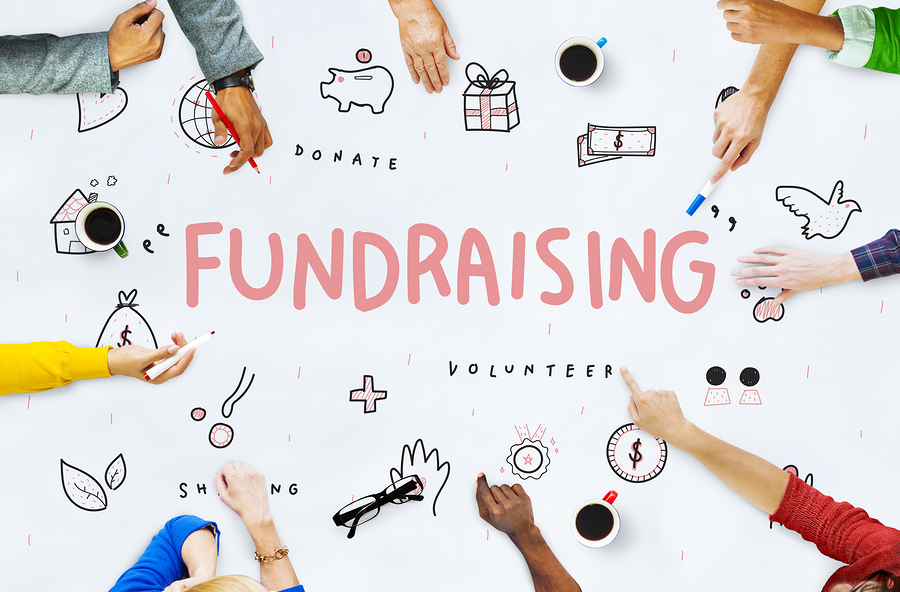Nonprofit Agency: Specialist Solutions to Assistance Your Objective and Goals
Nonprofit Agency: Specialist Solutions to Assistance Your Objective and Goals
Blog Article
The Duty of Area Involvement in Nonprofit Fundraising: Structure Lasting Relationships for Sustainable Assistance
Neighborhood engagement is increasingly identified as a crucial part of successful not-for-profit fundraising. By cultivating authentic relationships with regional stakeholders, companies can cultivate trust and commitment, which are vital for sustainable support. However, the approaches and techniques used to involve areas vary commonly, raising crucial questions regarding performance and effect. What are the very best methods for growing these vital links, and how can nonprofits gauge their success in this arena? Comprehending these characteristics could dramatically influence the future of fundraising efforts and the general goal of nonprofit organizations.
Recognizing Community Interaction
Area involvement is an important element of effective not-for-profit fundraising initiatives. It describes the strategies and activities that companies utilize to attach with their neighborhood areas, fostering relationships that are mutually helpful. Comprehending neighborhood involvement involves recognizing its diverse nature, which includes cooperation, involvement, and outreach. Nonprofits have to recognize crucial stakeholders-- such as neighborhood members, neighborhood businesses, and various other companies-- to create reliable interaction techniques.
Efficient community engagement is predicated on energetic listening and responsiveness to the requirements and interests of the neighborhood. This process entails getting feedback, recognizing neighborhood dynamics, and ensuring that the company's objective straightens with regional top priorities. Engaging the area can take numerous kinds, consisting of public meetings, volunteer possibilities, and partnership campaigns, each developed to urge involvement and financial investment in the company's goals.
In addition, community interaction need to be approached as a continuous discussion instead of an one-time initiative. By fostering an inclusive setting where area voices are heard and valued, nonprofits can develop a solid foundation for future fundraising ventures. Inevitably, a deep understanding of community interaction equips organizations to produce genuine links that boost their overall efficiency and sustainability.
Advantages of Solid Relationships
Solid relationships developed with area involvement return numerous benefits for nonprofit fundraising efforts. First and leading, these relationships foster count on and credibility, vital parts in motivating donors to add. When possible supporters see a nonprofit actively included in their neighborhood, they are more probable to count on its objective and effect.

Furthermore, these partnerships assist in effective interaction. Nonprofits can leverage their links to share stories of influence, updates, and needs, ensuring that fans continue to be educated and engaged. This open line of interaction not only strengthens bonds however also urges word-of-mouth promotion, increasing the not-for-profit's reach.
Finally, strong area ties can draw in brand-new partners and enrollers. Businesses and people are extra inclined to line up with companies that demonstrate significant area involvement, offering added sources and support that can substantially boost fundraising abilities. Hence, cultivating robust connections via area engagement is important to a nonprofit's long-lasting fundraising success.
Techniques for Efficient Interaction
Exactly how can nonprofits successfully engage their neighborhoods to improve fundraising efforts? Developing targeted strategies is important for fostering meaningful links. Initially, leveraging social media sites systems makes it possible for companies to share their objective dynamically and interactively, reaching a broader target market. Routine updates, engaging content, and calls-to-action can galvanize area interest and engagement.
Second, organizing area occasions, such as workshops, volunteer chances, or fundraising drives, assists in in person interaction, allowing nonprofits to display their effect and efforts. These events not just elevate funds however likewise cultivate connections and enable area members to engage directly with the cause.
Third, executing tailored interaction techniques can improve involvement. Customizing messages to particular contributor segments based on rate of interests and past payments promotes a sense of belonging and financial investment in the organization's goal.
Last but not least, producing collaborations with regional services and area leaders can intensify outreach efforts. Collaborative initiatives can boost presence and reliability, showing a cumulative commitment to the neighborhood's well-being. By incorporating these techniques, nonprofits can construct long lasting connections that enhance fundraising initiatives and drive sustainable support.
Gauging Involvement Success
While involving the area is crucial for effective nonprofit fundraising, determining the efficiency of these interaction initiatives is similarly essential. Developing clear metrics allows organizations to analyze exactly how well they are attaching with their target market and accomplishing their fundraising objectives. Secret efficiency signs (KPIs) such as benefactor retention rates, volunteer participation levels, and involvement on social networks systems give concrete data for examination.

Routinely analyzing these metrics makes it possible for organizations to pivot their strategies when essential, ensuring that community involvement stays straightened with their general mission. Moreover, sharing these outcomes with stakeholders fosters openness and builds trust fund, encouraging his response more community participation. Ultimately, a robust dimension framework not just educates future fundraising efforts yet also enhances the use this link partnership between the not-for-profit and its supporters, laying the foundation for lasting success.
Case Research Studies in Area Impact
Many study show the extensive impact that neighborhood involvement can have on nonprofit fundraising success. One remarkable example is the "Something to chew on" campaign, where a local food bank partnered with companies and institutions to host area suppers. These events not only elevated funds yet also fostered a sense of belonging among individuals, significantly enhancing contributor retention rates.
An additional compelling situation is the "Environment-friendly Spaces Project," which included regional citizens in the revitalization of metropolitan parks. This effort not just amassed financial backing from neighborhood businesses but also cultivated a volunteer base that added to continuous maintenance and programming. The feeling of ownership and pride among community participants translated right into continual contributions.
In the world of arts, the "Art for All" campaign successfully involved neighborhood musicians and clients to create collaborative art setups, leading to enhanced exposure and contributions for a local arts not-for-profit.
These instances highlight that when nonprofits prioritize neighborhood participation, they can create long-term partnerships that boost fundraising initiatives, ensuring sustainable assistance and promoting a lively area society. Such situations demonstrate that neighborhood involvement is not simply an approach however an essential pillar of nonprofit success.
Verdict
In conclusion, neighborhood engagement is essential to the success of not-for-profit fundraising initiatives. Ultimately, a durable foundation of area support not only magnifies fundraising possible yet additionally grows a culture of collaboration, vital for achieving long-lasting organizational goals and sustaining meaningful influence. fundraising consultant.
Nonprofits need to recognize key stakeholders-- such as area participants, regional businesses, and other companies-- to develop effective engagement techniques.

In final thought, area interaction is integral to the success of nonprofit fundraising initiatives.
Report this page